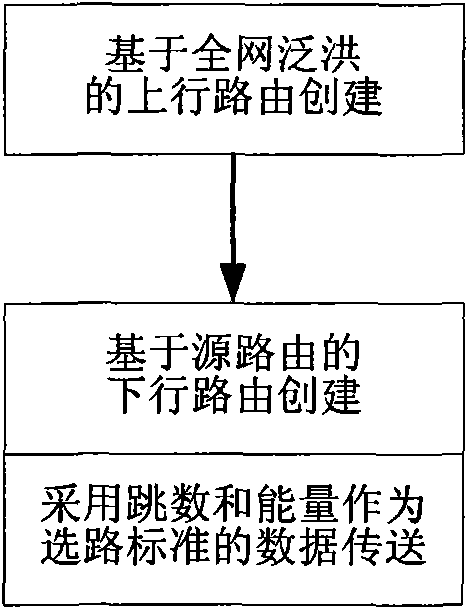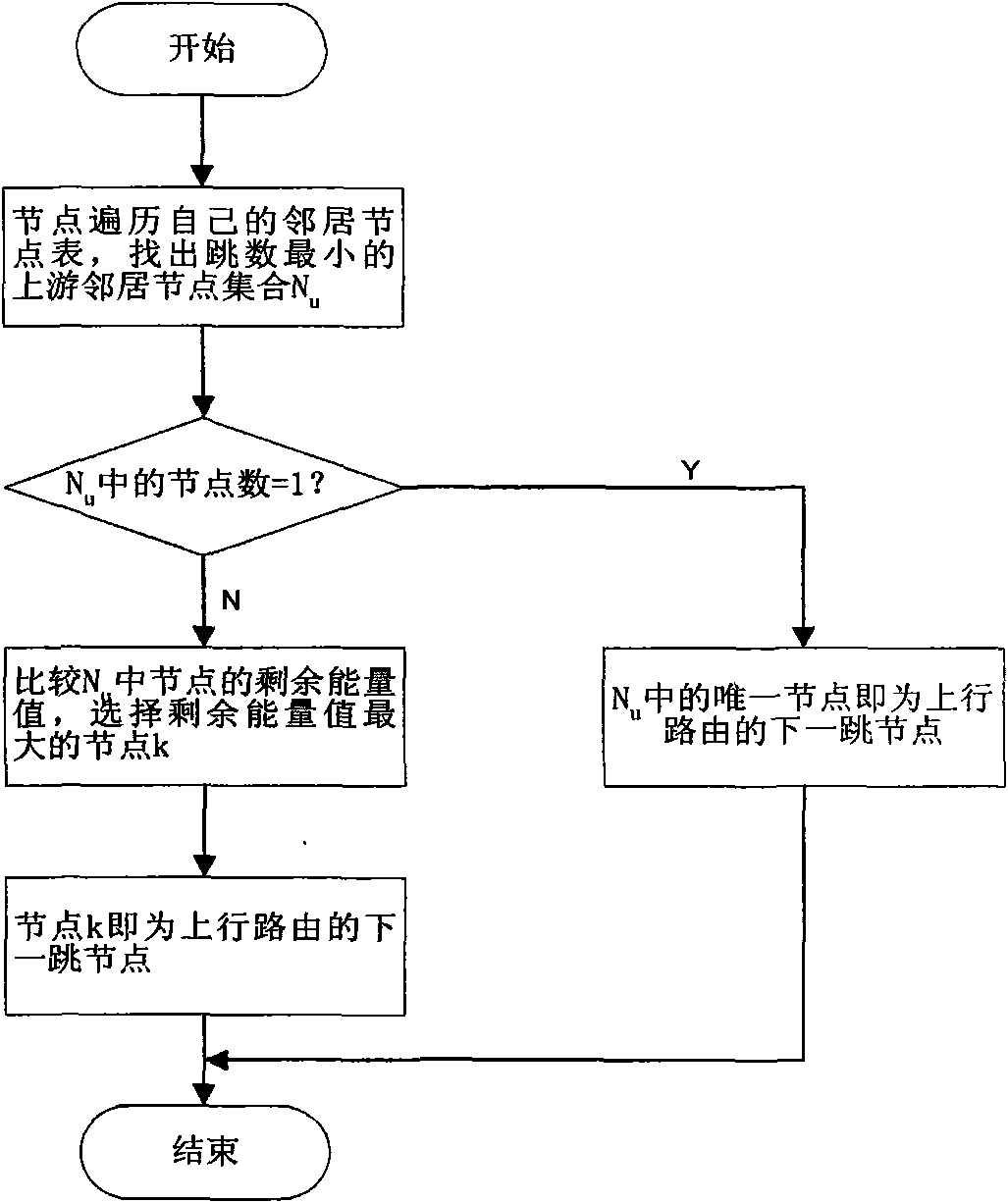Cross-layer and bi-directional routing method based on hop number and energy in wireless sensor network
A wireless sensor and sensor node technology, applied in network topology, wireless communication, energy consumption reduction, etc., can solve the problems of no establishment of downlink routing, additional overhead of node remaining energy information, increased control overhead, etc., to improve network bandwidth utilization , save node energy and network bandwidth, and save overhead
- Summary
- Abstract
- Description
- Claims
- Application Information
AI Technical Summary
Problems solved by technology
Method used
Image
Examples
Embodiment Construction
[0024] Uplink route creation is an uplink route creation operation within the entire network. The sink node broadcasts a route creation message by flooding the entire network. After receiving this message, each sensor node establishes an uplink route pointing to the sink node, and uses the broadcast The control message is forwarded once; the downlink route creation is the downlink route creation operation of the sink node, and each sensor node uses the source routing method to carry each intermediate node in the header of the first data packet sent to the sink node. The sink node establishes a downlink route pointing to the sensor node after receiving the information of the node; in the process of data transmission, path selection, unicast transmission of packets on one path, cross-layer acquisition of node hop count and remaining energy information , releases and updates, etc.
[0025] Such as figure 1 Shown is a schematic flowchart of a cross-layer bidirectional routing met...
PUM
 Login to View More
Login to View More Abstract
Description
Claims
Application Information
 Login to View More
Login to View More - R&D
- Intellectual Property
- Life Sciences
- Materials
- Tech Scout
- Unparalleled Data Quality
- Higher Quality Content
- 60% Fewer Hallucinations
Browse by: Latest US Patents, China's latest patents, Technical Efficacy Thesaurus, Application Domain, Technology Topic, Popular Technical Reports.
© 2025 PatSnap. All rights reserved.Legal|Privacy policy|Modern Slavery Act Transparency Statement|Sitemap|About US| Contact US: help@patsnap.com



